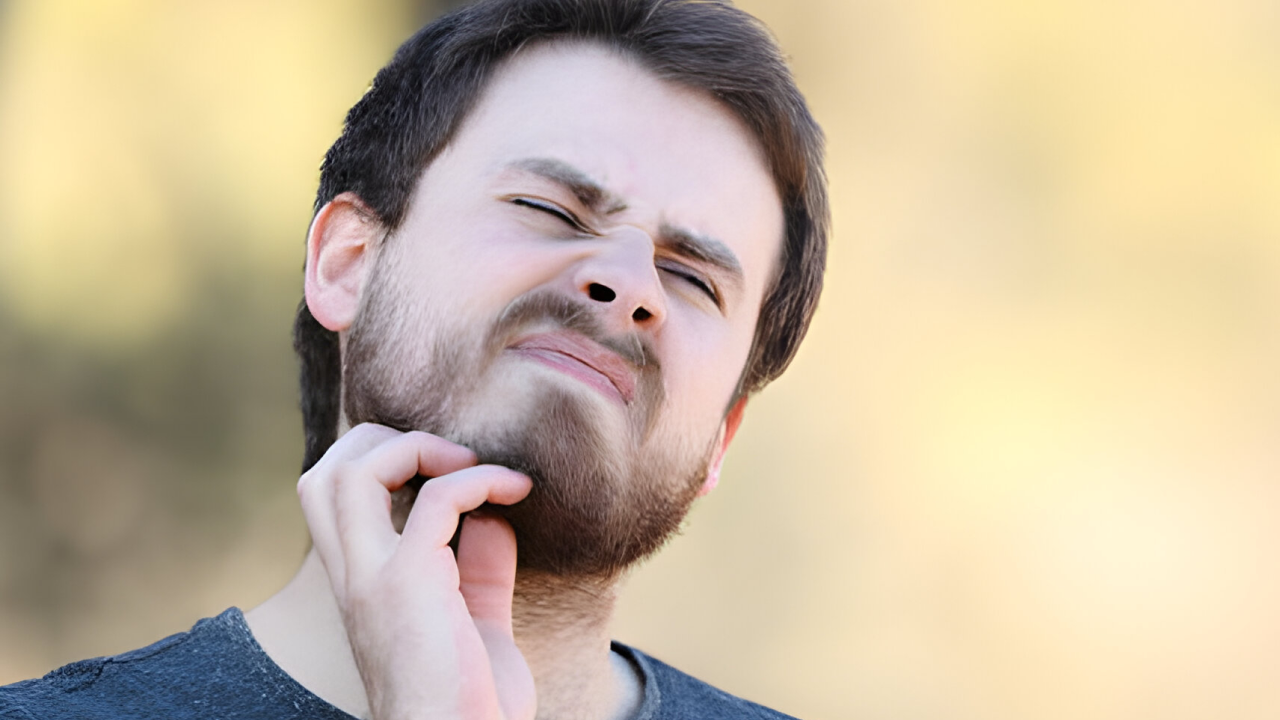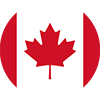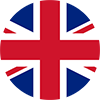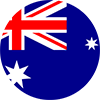How To Get Rid Of Beard Dandruff, And How To Avoid It
Beard dandruff is a pesky problem many men face, creating discomfort and insecurity. Unknown to many, this condition is often caused by the fungus Malassezia globosa, which thrives in oily skin areas.
In this helpful guide, we'll delve into effective home remedies that can help you combat beard dandruff and restore your confidence. Keep reading - your ultimate solution for a flake-free beard awaits!

Understanding Beard Dandruff
Beard dandruff, also known as beard flakes or beardruff, is a common condition characterized by dry, flaky skin on the beard.
What is Beard Dandruff?
Beard dandruff, often referred to as 'beardruff,' is a condition where the skin under your beard sheds tiny flakes. This common issue arises due to the overgrowth of a naturally occurring fungus on our skin called Malassezia globosa.
This fungus thrives on oily skin near sebaceous glands--like in and around beards--and can cause your beard area to flake when it produces by-products that trigger additional skin shedding.
In some cases, dryness can also lead to so-called 'dry beard dandruff.' Not only does this result in an unsightly flaky appearance but it can also cause itchiness and discomfort.
What Causes Beard Dandruff?
Beard dandruff can be triggered by several factors. One of the primary culprits is a fungus known as Malassezia globosa. This microbe thrives in sebaceous gland-rich areas, making our skin - especially under the beard - its playground.
Damp and oily environments bolster the growth of this fungi leading to flaky skin or 'beardruff'. Adding insult to injury, conditions like seborrheic dermatitis create an overproduction of oil (sebum) on your skin and scalp leading to further aggravation of dandruff.
Another common cause surfaces when your skin gets excessively dry. Dryness may result from strong cleansers that strip away natural oils from your face, leaving it vulnerable and parched.
Regular washing routines also play a role in controlling beard dandruff since they help prevent dirt buildup that might otherwise block pores and instigate flakes.
Factors that Worsen Beard Dandruff
Strong cleansers, poor face and beard hygiene, and changes in weather are some of the factors that can worsen beard dandruff.
Use of Strong Cleansers
Strong cleansers strip the skin under your beard of its natural oils. This causes dryness and makes it a suitable environment for dandruff-causing fungi to thrive. Many men mistakenly think that using strong, harsh soaps or face washes will effectively eliminate beard dandruff.
However, these products may remove too much sebum, which is essential in maintaining a healthy balance on your skin and preventing dryness. Drying out your skin will only make matters worse as it leads to excessive flaking and may even cause dermatitis.
Instead of relying on strong cleansers, opt for gentle ones specifically made for beards like NIVEA MEN Sensitive Pro Menmalist Face & Beard Wash since they contain hydrating ingredients while still being able to efficiently cleanse away dirt and debris from hair shafts.
Poor Face and Beard Hygiene
Neglecting face and beard hygiene accelerates the progression of beard dandruff. Bacteria and dirt pile up on your skin when regular washing is skipped, causing oil to build up in sebaceous glands.
This excess oil contributes to the development of the fungus Malassezia globosa, a leading cause of flaky beard or dermatitis. The use of a specific cleanser for beards not only cleanses but also conditions the underlying skin, averting dryness and reducing chances of flakes appearing.
Incorporating grooming techniques like trimming into your routine prevents an overgrowth of hair which can trap sweat and debris. A consistent regimen focused on cleaning and caring goes a long way towards eliminating dandruff from your beard while stopping it from reappearing later down the line.
Changes in Weather
Changes in weather can have a significant impact on beard dandruff. Extreme cold or warm temperatures can lead to dryness, which exacerbates the condition. This is especially true during winter or in dry climates where the lack of moisture in the air affects the skin and beard.
It's important to adjust your skincare routine accordingly and use products that provide adequate hydration for your skin and facial hair. Moisturizing regularly is crucial to combat dryness and prevent beard dandruff from worsening.
By adapting to changing weather conditions and keeping your skin and beard properly moisturized, you can effectively manage this common issue.
Effective Home Remedies for Beard Dandruff
To treat beard dandruff, you can use aloe vera gel, apply lemon juice, regularly exfoliate your skin, adjust your beard washing routine, and moisturize after showering.
Use of Aloe Vera Gel
Aloe vera gel is a natural remedy for beard dandruff. It soothes and moisturizes the skin under the beard, reducing dryness and flakiness. Its anti-inflammatory properties help reduce redness and irritation caused by dandruff. Additionally, aloe vera gel eliminates the fungus responsible for beard dandruff. It can be applied directly to the beard and skin or mixed with other ingredients for added benefits.
Lemon Juice Application
To treat beard dandruff, you can use lemon juice as a natural remedy. Here's how it can help:
- Lemon juice has antifungal properties that can combat the fungus causing dandruff.
- Applying lemon juice to your beard helps balance the skin's pH level and reduces dandruff symptoms.
- Lemon juice can be mixed with aloe vera gel or other ingredients to enhance its effectiveness.
- Consistent application of lemon juice to your beard and skin can eliminate beard dandruff and prevent it from coming back.
Regular Exfoliation
Regular exfoliation is an important step in preventing beard dandruff. It helps to remove dead skin cells and unclog the pores, keeping your beard clean and healthy. Here are some ways you can incorporate regular exfoliation into your beard care routine:
- Gently scrub your beard with a mild exfoliating product at least once a week.
- Use a soft - bristled brush or a beard comb to gently massage the skin underneath your beard, promoting blood circulation and removing dead skin cells.
- Consider using natural exfoliating ingredients such as sugar or coffee grounds mixed with olive oil or coconut oil to create a DIY scrub.
- Be mindful not to over - exfoliate, as this can irritate the skin and exacerbate dandruff. Stick to a gentle routine that suits your skin type.
Adjusting Beard Washing Routine
To effectively treat beard dandruff in men, it is important to adjust the washing routine for your beard. This can help to prevent further irritation and promote healthier skin. Here are some tips for adjusting your beard washing routine:
- Wash your beard regularly: Regular washing of the face and beard is necessary to remove dirt, oil, and dead skin cells that can contribute to beard dandruff. Use a gentle cleanser explicitly designed for the beard.
- Don't over-wash: While regular washing is important, avoid over-washing as it can strip away natural oils that keep the skin and beard moisturized. Washing your beard every 2-3 days should be sufficient.
- Use lukewarm water: When washing your beard, use lukewarm water instead of hot water. Hot water can further dry out the skin and contribute to dandruff.
- Gently massage the cleanser into your beard: When applying the cleanser, use gentle circular motions to massage it into your beard and skin. This helps to clean the hair shafts and exfoliate any dead skin cells.
- Rinse thoroughly: After cleansing, make sure to rinse your beard thoroughly with cool water to remove all traces of cleanser.
- Pat dry gently: Instead of rubbing your beard vigorously with a towel, pat it dry gently to avoid further irritation.
- Follow up with a moisturizer: After washing, apply a moisturizer specifically designed for the face and beard to hydrate the skin and prevent dryness.
Post Shower Moisturizing
Moisturizing your skin and beard after showering is essential for combatting beard dandruff. It helps prevent dryness and soothes any irritation or itching associated with dandruff. Here are some tips for effective post-shower moisturizing:
- Apply a moisturizer or beard oil to the skin underneath your beard. These products help to hydrate and nourish the skin, reducing the risk of dryness and flaking.
- Massage the moisturizer or oil into your skin using circular motions. This helps to stimulate blood flow and ensure that the product is evenly distributed.
- Don't forget to also apply moisturizer or oil to your beard itself. This will help to keep your facial hair soft, healthy, and free from flakes.
- Use products that contain hydrating ingredients such as argan oil or jojoba oil. These natural oils are known for their moisturizing properties and can help keep your beard and skin hydrated.
- Be consistent with your post - shower moisturizing routine. Regularly applying moisturizer will help maintain the moisture balance in your skin and prevent dryness that can lead to dandruff.
Prevention Methods to Keep Beard Dandruff at Bay
Prevent beard dandruff with these effective methods: maintain a healthy beard, use beard oils and balms, trim your beard regularly, incorporate a daily washing routine, and protect your skin from UV rays.
Maintaining a Healthy Beard
To maintain a healthy beard, it is essential to establish a regular grooming routine. This includes washing your face and beard regularly using a gentle cleanser designed specifically for facial hair.
Regular cleansing helps remove dirt, oil, and dead skin cells that can lead to dandruff and itchiness. Additionally, exfoliating your beard once or twice a week helps prevent clogged pores and promotes healthy hair growth.
Lastly, don't forget to moisturize your skin and beard daily with a hydrating product to combat dryness and maintain the overall health of your beard. Remember, proper grooming is key to achieving a healthy, flake-free beard.
Keeping tabs on the health of your facial hair doesn't stop at cleansing and moisturizing alone. It also involves adopting some lifestyle habits that promote overall well-being. Make sure you're getting enough sleep as lack of sleep can contribute to dryness in both the skin and hair follicles.
Incorporating Beard Oils, Balms, and Other Beard Products
Using beard oils, balms, and other beard products is an effective way to prevent and treat beard dandruff. These products are specifically designed to nourish the skin underneath the beard, providing essential moisture and preventing dryness - a common cause of flaky beard.
Regularly washing your beard with cleansers explicitly formulated for beards helps cleanse and condition the skin, while moisturizing it with these specialized products ensures proper hydration.
Consistency in using these products is key to getting rid of beard dandruff and maintaining a healthy-looking beard. So, make sure to incorporate beard oils, balms, and other grooming products into your daily routine for a dandruff-free and well-groomed beard that you can confidently show off!
Trimming your beard to prevent dandruff
Trimming your beard not only helps you maintain a well-groomed appearance but also plays a crucial role in preventing dandruff. By trimming regularly, you can reduce the accumulation of by-products created by the fungus that causes beard dandruff. Here are some key points to remember:
- Trim your beard regularly to remove dead skin cells and prevent buildup.
- Use sharp, clean scissors or a beard trimmer specifically designed for grooming facial hair.
- Opt for a length that suits your style preferences while ensuring easy maintenance.
- Regular trimming promotes healthy hair growth and reduces the risk of dandruff.
Conclusion
Combatting beard dandruff doesn't have to be a headache. With these effective home remedies, you can say goodbye to flaky and itchy skin under your beard. Give aloe vera gel, lemon juice, regular exfoliation, adjusting your washing routine, and post-shower moisturizing a try for a healthier and dandruff-free beard.
Take control of your facial hair game with these simple yet powerful remedies!
Related Articles
Beard Rash: Treatment and Prevention






